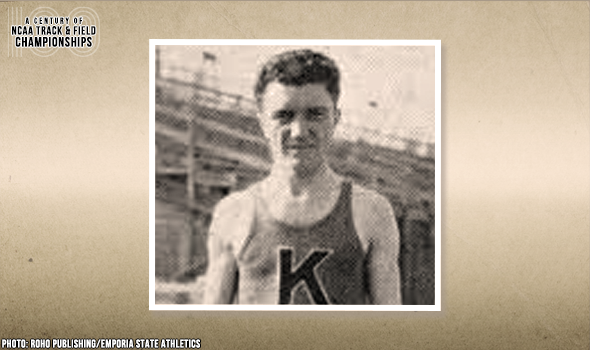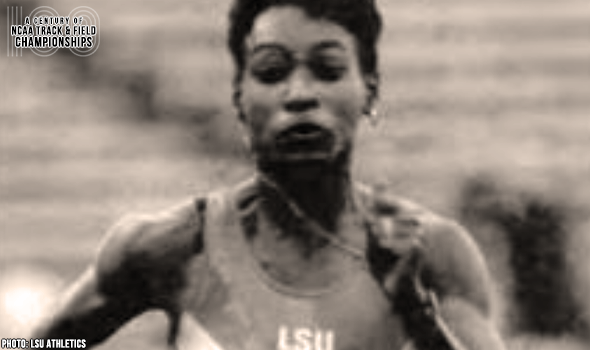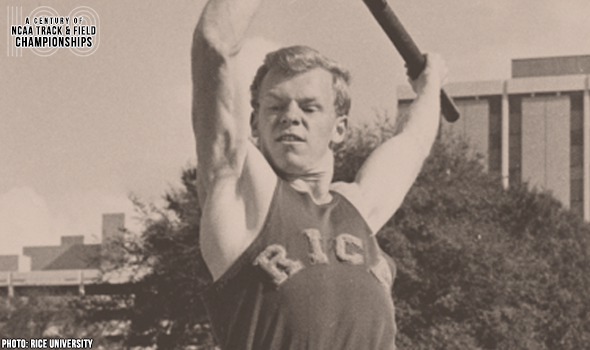
Fosbury Flopped To High Jump Glory
It was initially called a flop, but in reality, Dick Fosbury had a huge hit.
The Oregon State high jumper became a star in 1968, riding his revolutionary style all the way to an Olympic gold medal and being recognized as one of the world’s best-known athletes.
The sensation was a new style of clearing the high jump bar that he developed in 1963 as a high school sophomore. Instead of using a straddle or roll technique, Fosbury went over the bar backwards. In 1964 his hometown newspaper, the Medford (Oregon) Mail Tribune, captioned a photo of him as “Fosbury Flops Over the Bar” and a story described his technique as like “a fish flopping into a boat.”
The radical style wasn’t an immediate success with everyone. Fosbury’s coach at Oregon State – USTFCCCA Hall of Famer Berny Wagner – had him working on a conventional method in practice, while allowing the flop in freshman meets. That changed in Fosbury’s sophomore year of 1967 when he opened up by clearing a school record 6-10 (2.08m).
“After the meet, Berny came up to me and said, ‘That’s enough,’” Fosbury recalled to Brad Fuqua of the Corvallis (Oregon) Gazette-Times in 2014. “That was the end of Plan A, on to Plan B.”
But it was in 1968 that Fosbury started to soar, both literally and in popularity. He was on the cover of Track & Field News in February when he first cleared 7-0 (2.13m) and in March, he won the NCAA Indoor title, tying the meet record of 7-0. In June, Fosbury won the NCAA Outdoor with a meet record 7-2¼ (2.19m), improving the previous meet record of 7-2 (2.18m) set by Boston U’s John Thomas in 1961.
Then came Mexico City and true world debut of the Fosbury Flop. The crowd of 80,000 was captivated, loudly cheering Fosbury’s clearances. “Only a triple somersault off a flying trapeze with no net below could be more thrilling,” one German reporter told Jon Hendershott of Track & Field News.
Fosbury, who had raised his PR to 7-3 (2.21m) at the Final Olympic Trials, had first-attempt clearances through a PR 2.22m (7-3¼), his third Olympic record height. He and fellow American Ed Caruthers – 1967 NCAA runner-up for Arizona – were the only ones left as the bar went to 2.24m (7-4¼) and the marathon runners were entering the stadium for their finish.
Only Fosbury was able to clear it – surpassing the American record of 2.23m (7-3¾) set in 1960 by Thomas. Fellow Oregonian Kenny Moore had just entered the stadium as the first American marathoner and “threw his arms in the air, danced a jig step and shouted congratulations to Dick. The crowd roared with delight at the antics of the two young Americans,” wrote Hendershott.
Fosbury, who missed three attempts at a world record 2.29m (7-6), would never jump as high again. He repeated as NCAA champ in 1969, raising the meet record to 7-2½ (2.20m).
Today it is estimated that 99% of high jumpers worldwide use the flop style.
The NCAA and collegiate track & field will mark a momentous milestone in the spring of 2021 -- the 100th anniversary of the NCAA Championships and with that, the NCAA Track & Field Championships. In June 1921, the University of Chicago hosted the first track & field championships in NCAA history.
This point can’t be emphasized enough: Not only was the event the first for NCAA track & field, but the first championships for any sport under the sponsorship of the NCAA.
To celebrate, over each of the next 365 days, the U.S. Track & Field and Cross Country Coaches Association (USTFCCCA) will celebrate moments, student-athletes, and coaches that have made a century’s worth of championships special. From humble beginnings to important historical milestones to the modern-day, collegiate track & field has evolved with the American society.
The 2021 edition of the NCAA Division I Outdoor Track & Field Championships begin with preliminary round action on May 27-29 in Jacksonville, Fla., and College Station, Texas. The championships final site and culmination of the celebration is slated for June 9-12, 2021 at the newly rebuilt Hayward Field in Eugene, Ore.

Clemson’s Ross Kept Getting Faster In 1995
Duane Ross PR’d twice in the 110H at the 1995 NCAA DI Outdoor T&F Championships. When Ross won in 13.32, he became the No. 3 performer in collegiate history.

Illinois’ Kerr Went Back-To-Back At NCAAs
George Kerr won back-to-back 800/880 titles at the NCAA Outdoor T&F Championships in 1959 & 1960. Kerr set a meet record of 1:46.4 in the 800 meters in 1960.

UCLA’s Baucham Bounded To TJ CR In 2005
Candice Baucham won the triple jump at the 2005 NCAA DI Outdoor T&F Championships with a collegiate record of 14.07m (46-2). Baucham took the event by more than one foot.

San Romani Went From Unknown To Legend
Archie San Romani won back-to-back 1500/mile crowns at the NCAA Outdoor T&F Championships in 1935 & 1936.

Auburn’s Glance Made Them Look Twice
Harvey Glance completed the 100-200 double as a freshman at the 1976 NCAA DI Outdoor T&F Championships. He set a meet record of 10.16 in the 100.

Nova’s Rhines Did NCAA 5K Three-Peat
Jen Rhines was the first female athlete in the history of the NCAA DI Outdoor T&F Championships to win three consecutive 5K titles.

Georgia’s Erm Cruised To 2019 Decathlon Title
Johannes Erm won the decathlon at the 2019 NCAA DI Outdoor T&F Championships by 342 points with his 8352 total. That was also the fifth-best score in meet history.

McMillen Adapted, Set 1500 MR In 1952
Bob McMillen set a meet record in the 1500 meters of 3:50.7 at the 1952 NCAA Outdoor Track & Field Championships.

LSU’s Duhaney Destroyed NCAA 200 Field In 1992
Dahlia Duhaney owns the largest margin of victory in meet history in the 200 with her 0.44-second winner at the 1992 NCAA DI Outdoor T&F Championships.

Rice’s Roberts Cooked Up Pole Vault Greatness
Dave Roberts was the second man to win three consecutive pole vault titles at the NCAA DI Outdoor T&F Championships, doing so from 1971 to 1973.

